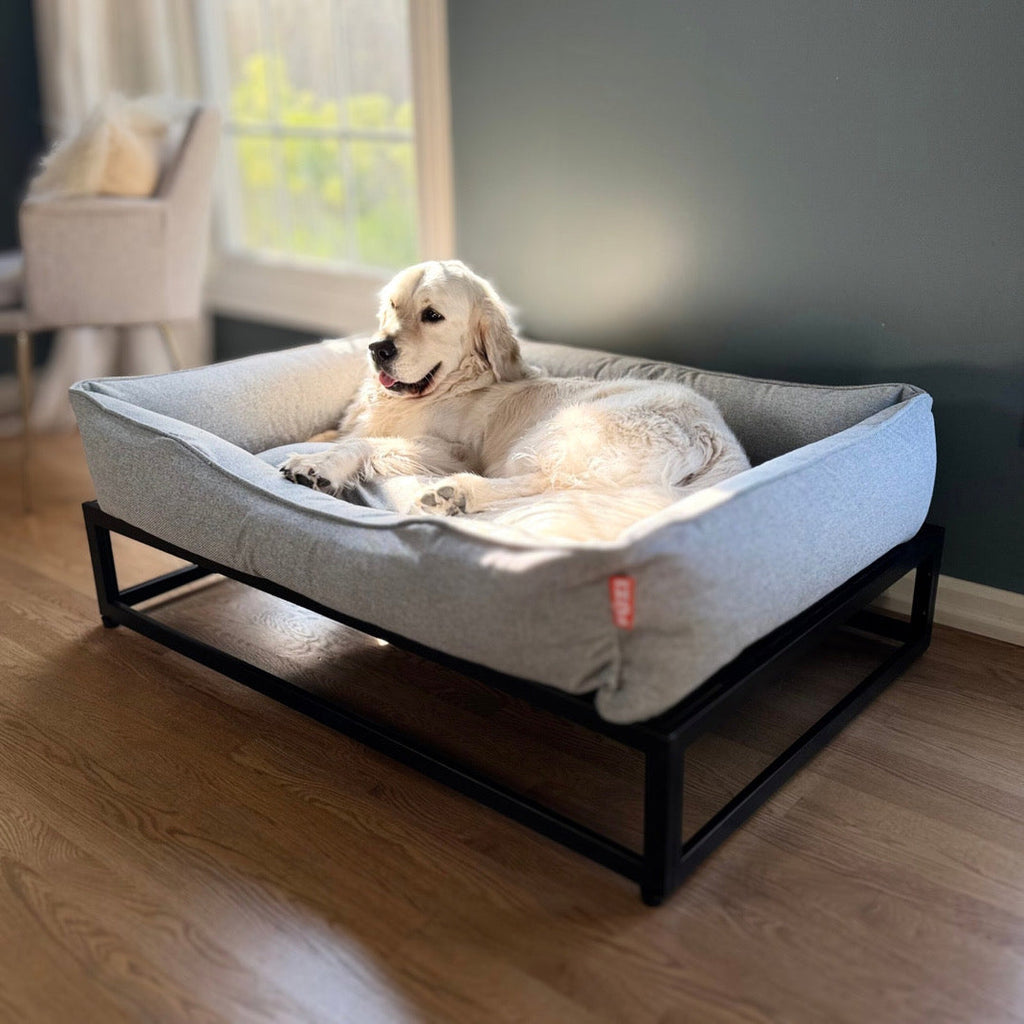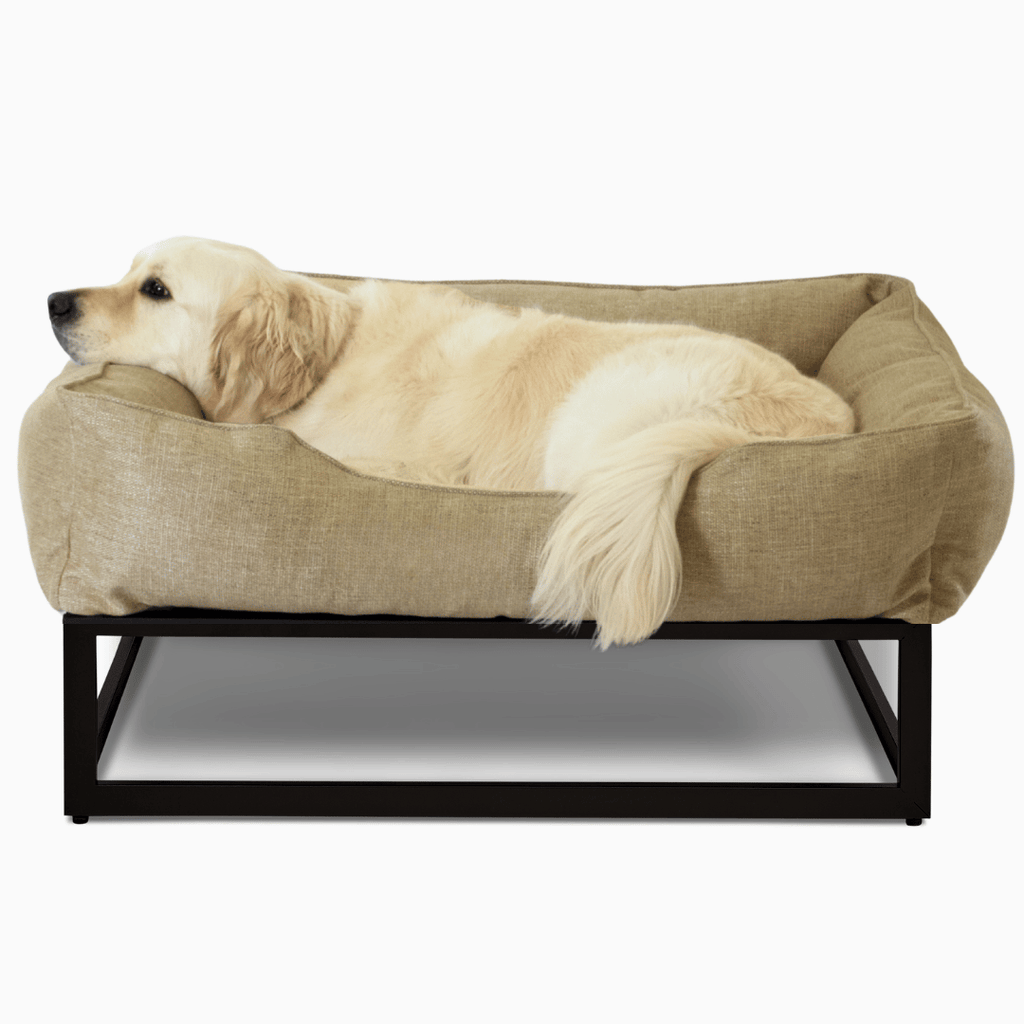Teaching your furry companion to understand and respond to commands is a fundamental aspect of dog training that enhances both your lives. Among these commands, the "place" command holds a special significance. It's not just about obedience; it's about creating a structured environment where your dog feels safe and calm. This blog explores the transformative role of elevated dog beds in teaching the "place" command, offering a step-by-step guide to integrate this essential command into your dog training regimen effectively.
The Significance of the "Place" Command in Dog Training
Understanding the "place" command is crucial for dogs, as it helps in setting clear spatial boundaries and establishing a serene, controlled environment within your home. This command is particularly beneficial in managing anxiety, hyperactivity, and boundary respect in dogs. An elevated dog bed, distinct from their usual resting spots, serves as the perfect tool for this training. It provides a physical and psychological 'elevation' of their designated space, making it easier for them to identify and adhere to their boundaries. This section of the training not only aids in behavioral management but also fosters a deeper sense of security and belongingness in dogs, contributing to their overall well-being.
Selecting the Ideal Elevated Dog Bed
Size and Comfort
When embarking on this training journey, the choice of an elevated dog bed is pivotal. It's essential to select a bed that accommodates your dog's size, ensuring they can comfortably lie down, stretch, and turn. Comfort is key in making the elevated bed a place they want to be, not just where they have to be.
Durability and Design
The bed's durability is equally important, as it should withstand the rigors of training and daily use. Opt for materials known for their longevity and resilience. Furthermore, the bed's design should not only be practical but also aesthetically pleasing, seamlessly blending into your living space while still standing out as the designated "place" for your dog.
Comprehensive Training Steps
Embarking on the journey to teach your dog the "place" command using an elevated dog bed involves a series of structured steps designed to build familiarity, associate the command with the action, and reinforce the desired behavior.
Introduction to the Elevated Dog Bed
The initial phase is to introduce your dog to the elevated dog bed in a stress-free manner. Allow your dog to approach and explore the elevated dog bed at their leisure, perhaps by placing their favorite toys on it or guiding them gently towards it. This approach helps your dog form a positive association with the elevated dog bed, setting a strong foundation for the training that follows.
Associating Command with Action
With your dog becoming more comfortable with the elevated dog bed, it's time to integrate the "place" command into the training. Gently lead your dog onto the elevated dog bed and, as they step onto it, use the command "place" in a clear, calm manner. The timing is crucial here; you want your dog to connect stepping onto the elevated dog bed with the command itself. Follow up their compliance with a treat, praise, or their preferred toy, rewarding even short moments of staying on the bed to reinforce this positive behavior.
Consistency and Practice
Repetition is the cornerstone of dog training. Continue to practice the "place" command, gradually extending the time your dog is expected to stay on the elevated dog bed before receiving their reward. It's important to remain consistent with your commands and rewards to reinforce this learning. As your dog becomes more adept at staying on the bed for longer periods, you can start to delay the reward slightly, encouraging them to remain in place.
Introducing Distractions
As your dog becomes more comfortable and consistent with staying on the elevated dog bed, begin introducing distractions to test and strengthen their adherence to the "place" command. This can range from simple movements around the room to having other people or pets walk by. The goal of elevated bed training is to ensure that your dog understands to stay on the elevated dog bed until you release them, regardless of distractions. This phase is crucial for applying the command effectively in real-life scenarios where distractions are a common occurrence.
Essential Training Tips
Successful training hinges not just on the steps taken but also on how they are implemented. Here are some indispensable dog training tips to guide you through the training process:
-
Positive Reinforcement: Utilize treats, praise, and toys as rewards for compliance with the "place" command. Positive reinforcement makes the training experience enjoyable for your dog and encourages them to repeat the desired behavior.
-
Patience and Consistency: Approach the training with patience and consistency. Dogs learn at their own pace, and consistent reinforcement helps solidify their understanding of the "place" command.
-
Gradual Progression: Introduce new challenges, like distractions, gradually. Ensure your dog is comfortable and reliable at each step before increasing the difficulty.
-
Clear Communication: Ensure your commands are clear and consistent. Avoid using the "place" command for different behaviors or locations to prevent confusion.
By following these steps and keeping these tips in mind, you'll be well on your way to successfully training your dog to understand and respond to the "place" command using an elevated dog bed. This training not only fosters good behavior and discipline but also enhances the bond between you and your dog, creating a more harmonious living environment for everyone involved.







